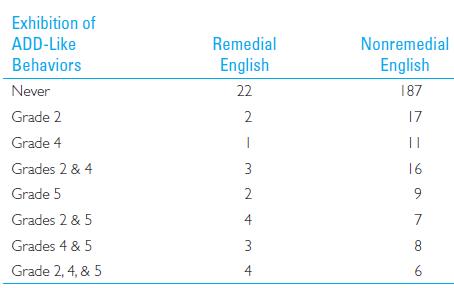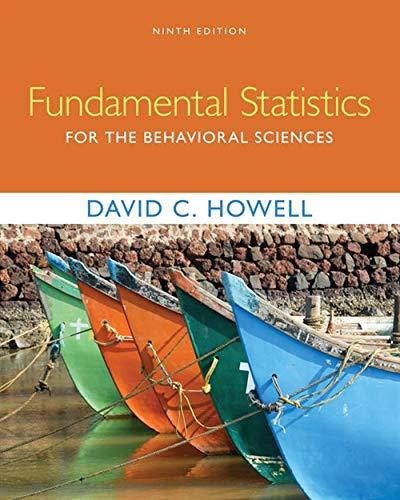In Exercise 19.11 children were classified as those who never showed ADD-like behavior and those who showed
Question:
In Exercise 19.11 children were classified as those who never showed ADD-like behavior and those who showed ADD behavior at least once in the second, fourth, or fifth grade. If we do not collapse across categories, we obtain the following data:
a) Run the chi-square test, again using R.
b) What would you conclude, ignoring the small expected frequencies?
c) How comfortable do you feel with these small expected frequencies? How might you handle the problem?
Exercise 19.11
Howell and Huessy (1985) used a rating scale to classify children as to whether or not they showed Attention Deficit Disorder (ADD)–like behavior in the second grade. They then classified these same children again in the fourth and fifth grades. At the end of the ninth grade they examined school records and noted which children were enrolled in remedial English. In the following data all children who were ever classified as ADD have been combined into one group (labeled ADD):
Does ADD classification in elementary school predict enrollment in remedial and nonremedial English in high school? Modify the R code that we have used in the text to make your calculation.
Step by Step Answer:

Fundamental Statistics For The Behavioral Sciences
ISBN: 9781305652972
9th Edition
Authors: David C. Howell





